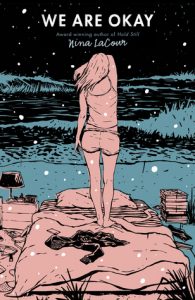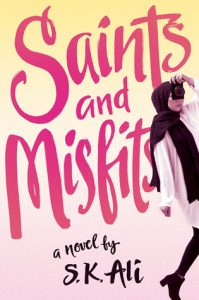
A poetry bracket, from P.S. 32
My March Madness bracket came close this year–it would’ve been so sweet if my alma mater had managed to take the championship and win me some local bragging rights, but alas.
But you know how it is when you come so close–you feel like magic slipped through your fingers. Maybe that’s why I have such high hopes that my sleeper pick poem “Big Grab,” by Tony Hoagland, has the chops to beat out tourney-favorite Billy Collins with his signature poem “The Lanyard.”
Yep. Poetry Madness. It’s a thing now.
We found it on Twitter (you can find lots of stuff on Twitter, like this, this, and this) and now three of my colleagues and a few hundred juniors in our classes can’t stop cheering for verse.
Poetry Madness has swept our high school’s juniors like a joywave, washing away the sweaty melancholy of SAT testing week.
The best part is how easy it was to assemble a bracket and get our classes engaged.
The concept is simple:
- Find yourself an empty bracket–preferable an Excel document that will make voting easy.
- Grab yourself three or more colleagues and tell them to brush the dust off their favorite poetry collections (or scour YouTube for their favorite slam poets performing).
- Select enough poems to fill up a bracket with head-to-head matchups (we went with a field of 32 because 64 poems would have spilled us well into the following month, but be as ambitious as your time allows!).
- Try to match up the poems in interesting ways–maybe one corner of the bracket is haiku and another is slam; or maybe “the classics” are always pitted against modern works in the first round.
- Never EVER tell the kids who chose what poems: My students are having as much fun trying to guess which poems sound like the stuff I’d like as they are with voting on the poems themselves.
Another reason not to tell them? This is a great entryway into discussing the styles of various poets casually: When the kids do beg me to tell who chose a given poem they loved (or loathed), it’s fascinating to hear what they see in the poem and why they see it reflected in one or another of the teachers from our department. It also gives some of your poetry holdouts a different reason to buy into the competition–they’ll come around to the poetry eventually. In the meantime, they’ll be intrigued by the idea that you’ll be the teacher-poetry picking champion if they vote well.
The last step is to crown a champion.
We were still in the first round in our tournament, but there was already talk of a little party at the end, where all the classes that participated could get together to celebrate the winning poem–and the teacher who picked that poem. Submit your winning teacher to the “honor” of doing a dramatic performance of their poem. The kids will eat it up and get one more dose of a piece of art they collectively crowned the best of the bunch.
Make sure you make the tournament about celebration and art for art’s sake. You should absolutely ask the kids what they think of each piece, but resist the urge to iamb their pentameters or rhyme their couplets. See what happens when you just let them absorb a whole bunch of poetry about which they know only this: One of their teachers loves this piece of art.
About a week into our “tournament,” I could already feel the change in energy for our students. Kids who know me but don’t have me for a teacher were asking me about the brackets. Kids were picking friendly fights with each other about close matchups between two closely matched poems. My colleagues were talking trash every time they saw me in the halls, claiming (inaccurately) that one of THEIR poems was sure to be crowned champion when clearly one of my poems was bound to win.
March Madness basketball teams and works of art probably don’t have a lot in common. Except maybe this: Sometimes we only care about one for a fleeting moment, but when that moment is buzzing with the right kind of energy, it doesn’t really need to last much longer.
 Michael Ziegler (@ZigThinks) is a Content Area Leader and teacher at Novi High School. This is his 15th year in the classroom. He teaches 11th Grade English and IB Theory of Knowledge. He also coaches JV Girls Soccer and has spent time as a Creative Writing Club sponsor, Poetry Slam team coach, AdvancEd Chair, and Boys JV Soccer Coach. He did his undergraduate work at the University of Michigan, majoring in English, and earned his Masters in Administration from Michigan State University.
Michael Ziegler (@ZigThinks) is a Content Area Leader and teacher at Novi High School. This is his 15th year in the classroom. He teaches 11th Grade English and IB Theory of Knowledge. He also coaches JV Girls Soccer and has spent time as a Creative Writing Club sponsor, Poetry Slam team coach, AdvancEd Chair, and Boys JV Soccer Coach. He did his undergraduate work at the University of Michigan, majoring in English, and earned his Masters in Administration from Michigan State University.


 Saints and Misfits, by S.K. Ali (Morris Finalist)
Saints and Misfits, by S.K. Ali (Morris Finalist) Bethany Bratney
Bethany Bratney During the twelve hour drive from Michigan to North Carolina and back over the holidays, I listened to a lot of podcasts. I admit it: I’m a podcast addict. Any time I have to drive for an hour or longer, I listen to a podcast–
During the twelve hour drive from Michigan to North Carolina and back over the holidays, I listened to a lot of podcasts. I admit it: I’m a podcast addict. Any time I have to drive for an hour or longer, I listen to a podcast– I remember talking to a colleague a few years ago who proclaimed that podcasting was not new media. She said it was just recorded radio and that podcasting was over. But podcasting is so not over and it’s a lot more than recorded radio. Sometimes podcasts never appear first on the radio at all. So why is this an important and popular media form?
I remember talking to a colleague a few years ago who proclaimed that podcasting was not new media. She said it was just recorded radio and that podcasting was over. But podcasting is so not over and it’s a lot more than recorded radio. Sometimes podcasts never appear first on the radio at all. So why is this an important and popular media form? In October, I was over the moon when
In October, I was over the moon when  It’s great storytelling and relevant to your students. The cast of characters is almost entirely high school students (or they were at the time of the murder) living through the things your students experience–juggling school and extracurriculars, navigating cultural differences between home life and school life, experiencing young love, making their way through the simmering stew of high school social life. This will seriously engage your students.
It’s great storytelling and relevant to your students. The cast of characters is almost entirely high school students (or they were at the time of the murder) living through the things your students experience–juggling school and extracurriculars, navigating cultural differences between home life and school life, experiencing young love, making their way through the simmering stew of high school social life. This will seriously engage your students. Delia DeCourcy joined Oakland Schools in 2013 after a stint as an independent education consultant in North Carolina where her focus was on ed tech integration and literacy instruction. During that time, she was also a lead writer for the
Delia DeCourcy joined Oakland Schools in 2013 after a stint as an independent education consultant in North Carolina where her focus was on ed tech integration and literacy instruction. During that time, she was also a lead writer for the